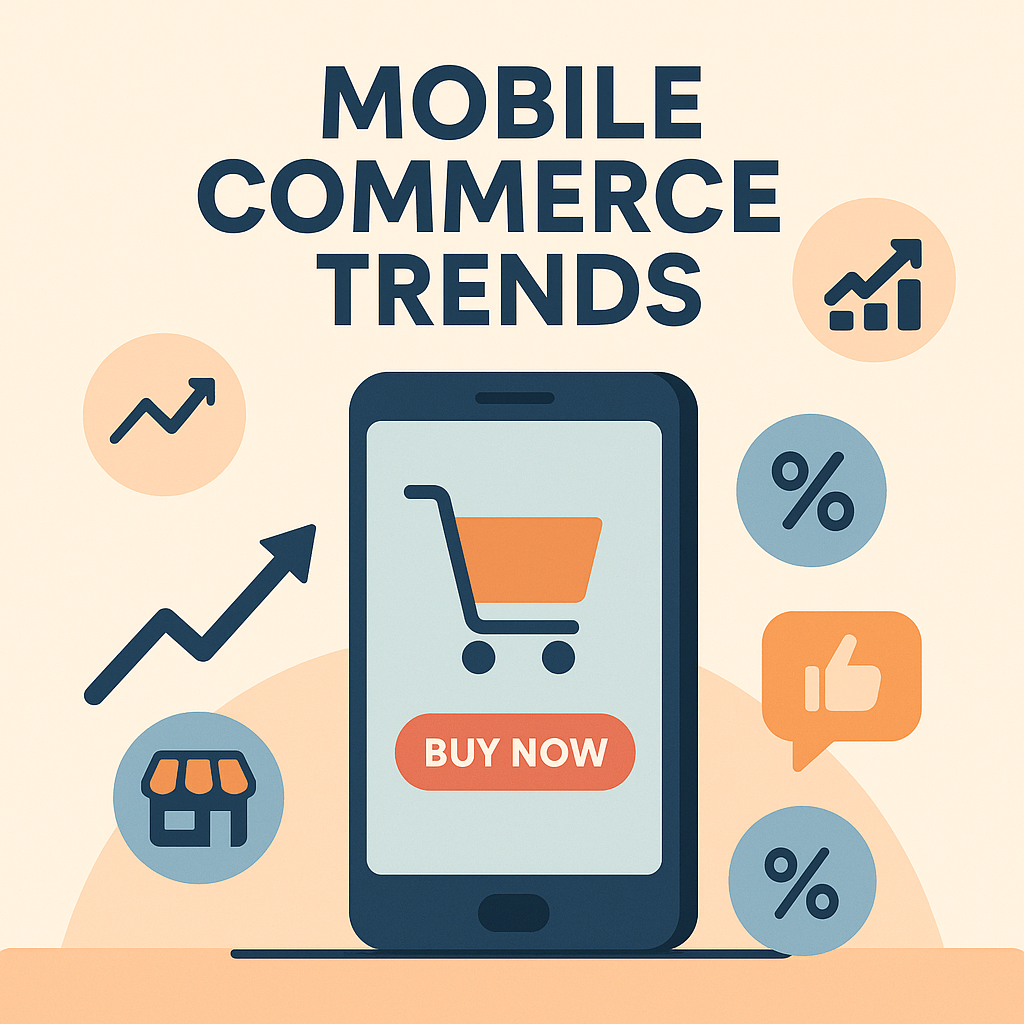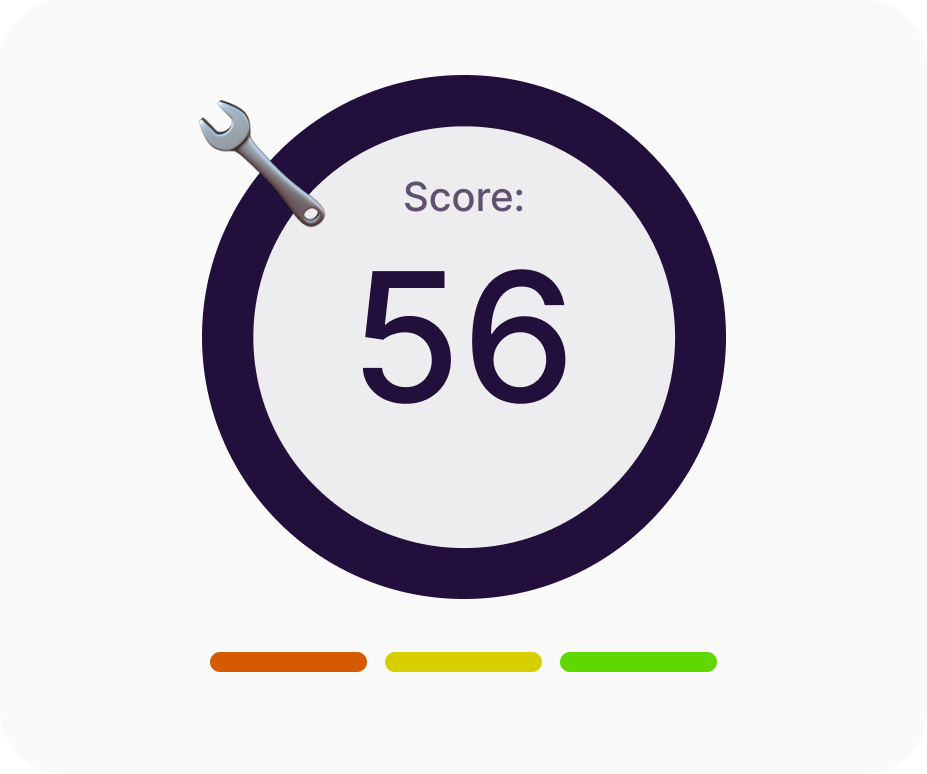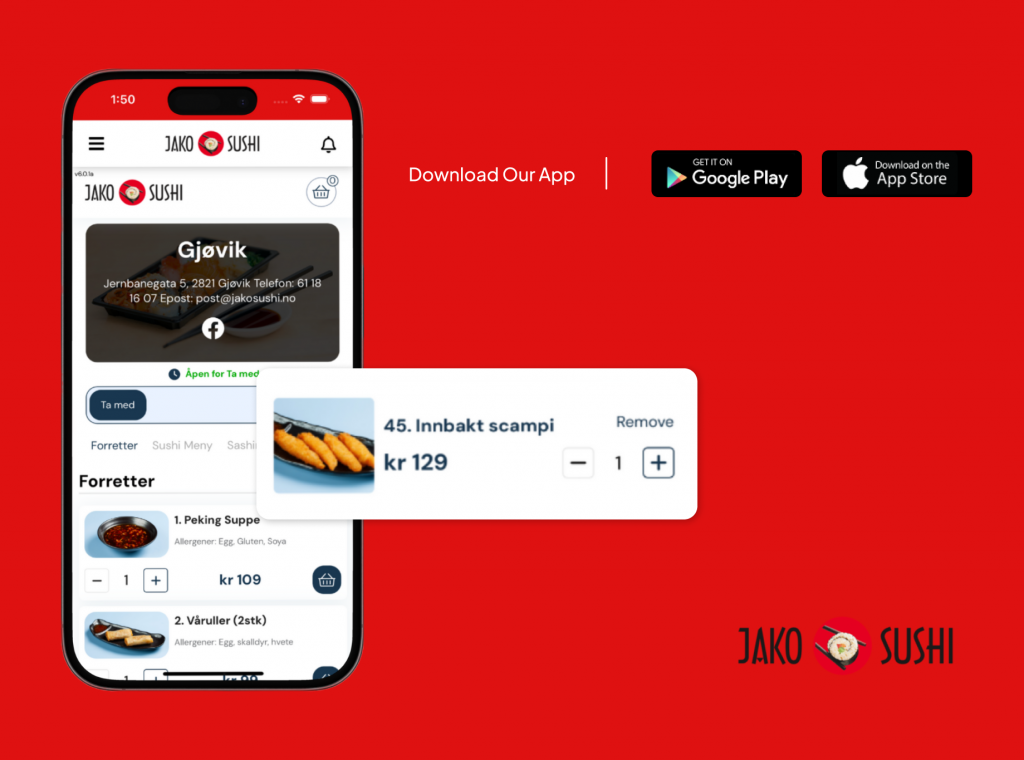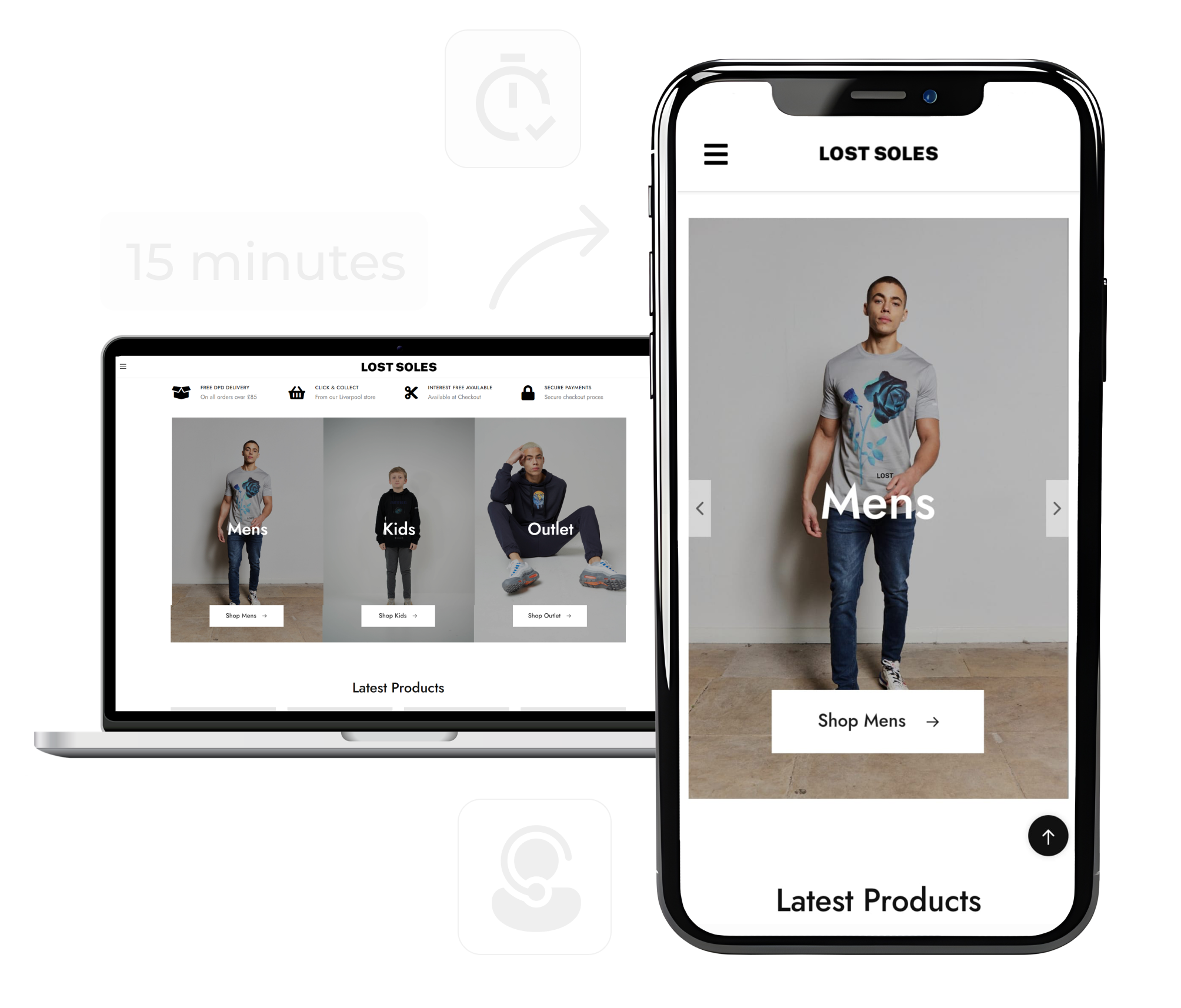
Mobile devices are no longer “just another channel” for online shopping—they’re now the primary channel for a huge portion of retail traffic and sales. As we move into 2026, the data is clear: the era of desktop-centric e-commerce is ending, and the age of mobile commerce is in full swing.
For small stores and independent merchants, this shift offers enormous opportunity—but only if you act. Many small business owners, however, still treat mobile as an afterthought: a responsive website, a simplified checkout, maybe an app someday “if we have time”. The problem: in the world of mobile commerce trends, “someday” is falling behind.
In this blog we’ll cover three key areas:
What the latest mobile ecommerce statistics tell us about where the market is headed.
The major mobile commerce trends (emerging behaviours, tech, channels) shaping how people shop on mobile.
Concrete, actionable steps small stores can take right now—whether you’re using a mobile ecommerce site, considering building an app, or investigating a best app maker for small business.
By the end, you’ll understand what the future of m-commerce looks like and how your store can plug into it—without enormous budgets.
Before diving into trends, let’s ground ourselves in the numbers. These mobile ecommerce statistics reveal the scale and urgency of the opportunity.
Global mobile commerce (m-commerce) revenues are projected to reach roughly $2.51 trillion in 2025, accounting for about 59% of all online retail sales.
One source estimates mobile commerce could even hit 75% of all e-commerce sales by 2026.
In the U.S., mobile commerce spending is growing rapidly—mobile visits and purchases are increasingly dominant.
Smartphone adoption continues to rise, and mobile internet access is increasingly the default. This fuels mobile shopping behaviour.
What this tells us: if you run a store and you haven’t deeply optimized for mobile, you’re already behind. And with the shift accelerating, your mobile ecommerce site or mobile-first approach isn’t optional—it’s mission-critical.
Here are the biggest mobile commerce trends shaping the landscape in 2025—and how small stores should respond.
Although many stores treat mobile as “responsive after desktop”, the trend is strongly toward mobile-first. That means designing your catalog, navigation, checkout and even marketing with a mobile device as the primary context. Consumers expect seamless scroll, fast load, intuitive touch navigation.
While mobile web remains important, data shows that mobile apps are driving larger share of transactions in many cases. Apps deliver better loading speeds, persistent login, push notifications, and deep-linking. For small stores, this means exploring whether a “convert site to app” or best app builder for small business solution can serve you.
Users increasingly expect personalisation: recommendations, saved preferences, dynamic content based on device, location or past behaviour. Immersive features like AR-try-on, video product demos, swipeable UI are growing. As one source puts it: “Businesses must prioritise immersive and personalised experience as well as social commerce.”
Mobile shoppers increasingly discover products via social platforms (Instagram, TikTok, etc.). The integration of shopping features inside mobile apps—and even inside social apps—is accelerating. This means your mobile strategy can’t ignore social channels.
Voice assistants and chatbots are influencing mobile commerce. Searching and shopping via voice or chat inside apps is becoming more common. Design your store experience keeping these in mind (e.g., voice search friendly, chat support mobile-first).
Simplified payment flows matter more on mobile—users are less tolerant of friction. Mobile wallets, one-tap checkout, and Buy-Now-Pay-Later (BNPL) solutions on mobile devices are becoming standard. Small stores should ensure their mobile checkout supports these.
With faster mobile networks (5G) and better device capabilities, mobile commerce can include richer media: AR/VR, 3D product models, live streaming shopping events. Small stores may not launch full AR immediately but should plan for richer media readiness.
Mobile isn’t only about device purchase—it’s about the full journey. Mobile can bridge online → in-store: click-&-collect, mobile-based loyalty, scan-to-buy in-store. Small retail businesses with physical presence need to integrate mobile drives into both online and offline.
Today’s mobile shopper cares more about brand values, sustainability, and ethical practices. Pages in mobile apps or sites with clear “eco” badges, mobile enabled returns tracking, and mobile-first brand stories are gaining trust.
Often overlooked, B2B mobile ecommerce is growing. Even wholesale buyers expect efficient mobile-first ordering apps. Small businesses supplying other businesses should consider mobile commerce trends in a B2B context too.
If you’re a small business owner or manager of a small-to-medium store, you might read the above and wonder: “That’s for big brands. What about me?” Good question. Here’s why it does matter—and what you can actually do.
Big players may have brand scale, but small stores often have agility. You can act quickly.
With mobile commerce growth accelerating, the barrier to entry for mobile-first competitors is lower.
If you deliver a smoother mobile experience than others in your niche, you win.
Treating mobile as “desktop-lite” (just responsive website) rather than a mobile-first experience.
Slow load times, clunky mobile checkout, outdated app or none at all.
Ignoring the value of app vs web channel differentiation.
Failing to enable modern mobile payments or personalisation.
Check your mobile site’s performance: load time, usability, navigation, checkout flow. Is the experience excellent for mobile users?
Ensure your checkout supports mobile wallets, one-click payments, minimal form fields.
Consider using a small business app builder or best app maker for small business. Apps can significantly lift conversion, retention and value of mobile shoppers.
Use push notifications (if you have an app), mobile-optimized email, mobile-targeted social ads, in-app messaging.
Look at mobile conversion rates, cart abandonment on mobile, mobile app vs mobile web performance. Use these to guide investment.
Even if you don’t adopt AR or voice shopping this year, plan resource/time so you can follow the trend as mobile commerce evolves.
For many small stores, the question arises: “Should I build an app? Or just focus on mobile web?” Let’s explore the pros, cons and when it makes sense.
Higher engagement and retention: apps sit on the home screen, send push, provide personalised experience.
Better performance: apps load faster, work offline or with intermittent connectivity.
Deeper channel control: you own the channel vs relying on mobile browser or search algorithm.
Enhanced features: deep linking, native UI, mobile wallets, loyalty integration.
Cost (though many mobile app builders now offer affordable options).
Maintenance (updates, OS compatibility).
User acquisition: you’ll need to encourage downloads and usage.
Over-investing prematurely may waste money if mobile volume or repeat rate is low.
Mobile traffic is 60%+ of your total traffic and still under-converting.
You have repeat buyers, loyalty or community focus (makes retention via app more valuable).
Your mobile checkout or mobile web experience is already strong and you’re seeking next-layer growth.
You can leverage app features (push, loyalty, offline) to differentiate.
Choose a reputable builder that integrates your existing catalog and checkout.
Focus on core flows first (browse, add-to-cart, checkout) — avoid building every feature at once.
Use app analytics from day one (in-app behaviour, retention, purchases) to measure ROI.
Promote the app: web banner, email campaign, incentives for download, QR codes in store.
Keep evolving the app based on mobile commerce trends (e.g., social commerce features, AR, voice).
Answer a few quick questions and get a custom report on your app potential, missed opportunities, and where to level up.

Let’s compare the two paths in simple form.
| Feature | Mobile Web Site | Mobile App |
|---|---|---|
| Accessibility | Instant, no install | Requires download/install |
| Home-screen presence | None | Yes – icon on device |
| Performance | Depends on browser & network | Native/performance-optimized |
| Re-engagement | Relies on email/SMS | Push notifications, in-app messaging |
| Personalisation | Via cookies & device-ID | Deeper integration with login & profile |
| Cost & launch speed | Lower | Higher initial investment, but more channel control |
| Ideal for small store | If mobile traffic is moderate & conversions are solid | If mobile traffic dominates & you want loyalty + differentiation |
For many small stores the path is: start with mobile web optimisation, then once mature and mobile is dominant, invest in app. But you can also use both concurrently—mobile web for acquisition + app for retention and value.
Jako Sushi, a popular restaurant in Gjøvik, Norway, wanted to make online ordering faster and easier for customers. Their website worked well, but mobile users expected a smoother, app-like experience.
The Challenge
Jako Sushi needed a mobile app that:
Integrated flawlessly with their existing POS and website
Delivered fast performance and simple checkout
Came with reliable, ongoing support after launch
ShopApper’s Solution
ShopApper built a native app fully synced with Jako Sushi’s systems—orders flow directly into their POS, and the app runs lightning-fast. Our team also provides dedicated support to keep everything running seamlessly.
The Results
📱 32% of all orders now come from the app
💸 1220% ROI within months of launch
Beyond the Numbers
The app turned mobile visitors into loyal repeat buyers. Push notifications, exclusive offers, and a friction-free checkout made Jako Sushi’s mobile experience as exceptional as their food.

Here’s a 3-month roadmap small stores can follow to embed mobile commerce trends and lift mobile performance.
Use analytics to measure mobile vs desktop conversions, abandonment rates, bounce rates.
Test your mobile site: load speed (<2 s ideal), navigation, checkout forms.
Enable mobile wallet payments; streamline mobile checkout.
Review mobile product pages: make sure images, descriptions, and UI are mobile-friendly.
Promote mobile-friendly purchase (e.g., “Order via phone, delivery tomorrow”).
Add mobile-specific marketing: mobile-optimized social ads, SMS or in-app push (if you already have app).
Implement personalised mobile offers (recent viewer discounts, abandoned-cart push).
Start exploring options for “build an app for small businesses” or best app builder for small business. Evaluate cost vs expected return.
Try A/B testing on mobile site: button placements, checkout steps, compression of image assets.
If mobile traffic is dominant and conversions still lag, pilot a mobile app via a small business app builder. Focus minimum viable features.
Plan feature roadmap aligned with mobile commerce trends: e.g., social commerce integration, AR-view, voice search.
Promote app: banners on site, email campaign, loyalty perks for download.
Monitor KPIs: sessions, conversion rate, app vs web difference, retention rate of app users, average order value.
Use insights to iterate your mobile strategy going forward.
What comes after these trends? What should you keep on your radar as mobile commerce evolves?
Super apps & ecosystems: The rise of platforms that combine shopping, payments, social, and services in one mobile environment.
Augmented Reality & Virtual Try-On: As device power increases and 5G spreads, AR will become standard for mobile shopping.
Voice commerce: Voice assistants and smart devices will reshape “search and shop” on mobile.
Sustainability & Ethical Mobile Shopping: Mobile shoppers will demand transparent supply chains, eco-friendly features, and mobile-enabled loyalty around values.
B2B mobile commerce accelerates: Mobile ordering, mobile portals for wholesale, mobile-enabled procurement become standard.
Offline + Mobile synergy: The boundary between in-store and mobile commerce will shrink further—e.g., mobile QR codes, instant mobile checkouts in-store, mobile loyalty integrations.
As one report summarises, mobile devices are “deeply integrated into daily life” and “shopping becomes anytime, anywhere activity”. The stores that treat mobile as a full channel, not just responsive website, will dominate.
At ShopApper, we know small stores face resource constraints but big opportunity. Whether you’re just optimising your mobile ecommerce site or looking to “build an app for small businesses” or evaluate the “best app builder for small business”, we’re here to bridge that gap.
We deliver mobile-first solutions that sync with your website and checkout.
We help you leverage the mobile commerce growth wave without hefty development cost.
We support ongoing updates aligned with the ever-evolving mobile shopping trends.
If your store is ready to act on the mobile commerce momentum, we bring the platform to make it practical.
Mobile commerce isn’t “just a trend” anymore—it’s the dominant paradigm in retail and e-commerce. For small shops, the shift presents one of the biggest opportunities of the decade. By aligning with mobile commerce trends, optimising your mobile ecommerce site, and considering app-based channels, you can position your business for growth rather than playing catch-up.
Start with audit, optimise your mobile flows, then evaluate whether your store should build an app. Use mobile-first marketing, measure mobile conversion performance and build for the future. The data is clear: mobile ecommerce growth is accelerating—those who act now will benefit most.
Take the first step toward an app for your online store. Schedule your free call and see how easy it is to get started with a full-service solution like ShopApper.

Features
Start By Industry



I’m Ece, your Account Manager. I’m eager to learn about your business and assist you in achieving your goals.
Please share some info about your business so I can be fully prepared to answer your queries. I’ll reply within 15-20 minutes. Thanks! ![]()